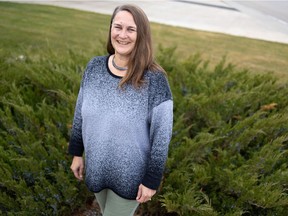New course begins new partnership between U of S, First Nation
College of Arts and Science to collaborate with Mistawasis Nêhiyawak, a First Nation located 120 kilometres north of Saskatoon.

Article content
Students from the University of Saskatchewan and Mistawasis Nêhiyawak will take part in what leaders from the university and the First Nation say will be the first of many meaningful exchanges next spring.
The university’s College of Arts and Science signed an agreement with the First Nation, located about 120 kilometres north of Saskatoon, in late October.
Referred to as an Asota — a Cree term meaning “make a promise” — the agreement will see the college and the First Nation collaborate over five years on teaching and research initiatives.
One of the first collaborations out of the gate will be a new geography course for fourth-year undergraduates. A group of students will spend a week on Mistawasis, working with students from the community’s high school.
Anthony Blair Dreaver Johnston, Mistawasis Nêhiyawak special advisor, was among many who worked on a previous agreement between Mistawasis and the university’s School of Environment and Sustainability starting in 2015.
“My approach to things is simply to share Mistawasis stories, and somehow that attracts attention,” Dreaver Johnston said of his connections to the Saskatoon campus. On a visit to the university, he was approached by Corrine Schuster-Wallace, an associate professor of geography, with the idea for the new course.
That led to others from the university, the First Nation and school officials getting involved to help put everything together.
Johnston said the Mistawasis Nêhiyawak high school is still relatively new, built just four years ago so that kids could learn on the land without being bused to another community.
“We wanted our children on Mistawasis from Kindergarten to Grade 12,” Dreaver Johnston said.
The new geography course is part of finding ways to incorporate land-based learning into as much of the school’s programming as possible, he added.
In the longer term, he said the community has ambitions for even more high-level programs at the school. For this first course, he said the hope is that the university students will benefit from first-hand experience with traditional knowledge and customs, while the high school students will get a glimpse of some of the possibilities of higher education.
“For us, just by our students meeting university professors, meeting university students, we hope that that inspires them to consider post-secondary education, to maybe become the researchers, become the professionals, become the doctors, become the professors.”

Schuster-Wallace said she’s thrilled at the opportunity to teach the course, which will see the university and high school students break up into small teams to research specific environmental challenges affecting the community’s overall well-being.
“I’ve always said that my teaching needed to be an extension of my research and it was about bringing the world into the classroom, but also bringing the classroom into the world. And so I really see this as one of the first opportunities to engage in that way,” she said.
She added that she hopes the class helps open her students to the value of traditional knowledge and Indigenous perspectives on the relationships between land and people.
“It really is about it being two-way, and really being reciprocal. ‘Authentic’ gets thrown around too often, but it’s about the respect and it’s about wanting the other partner to benefit as much if not more so than you. And I think we both feel the same way.”
The news seems to be flying at us faster all the time. From COVID-19 updates to politics and crime and everything in between, it can be hard to keep up. With that in mind, the Saskatoon StarPhoenix has created an Afternoon Headlines newsletter that can be delivered daily to your inbox to help make sure you are up to date with the most vital news of the day. Click here to subscribe.






Postmedia is committed to maintaining a lively but civil forum for discussion. Please keep comments relevant and respectful. Comments may take up to an hour to appear on the site. You will receive an email if there is a reply to your comment, an update to a thread you follow or if a user you follow comments. Visit our Community Guidelines for more information.